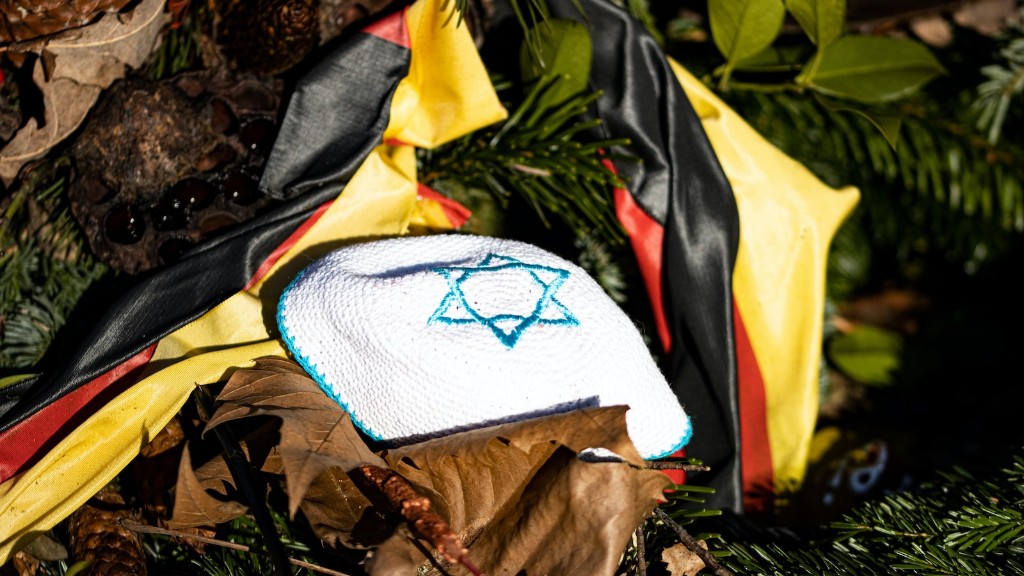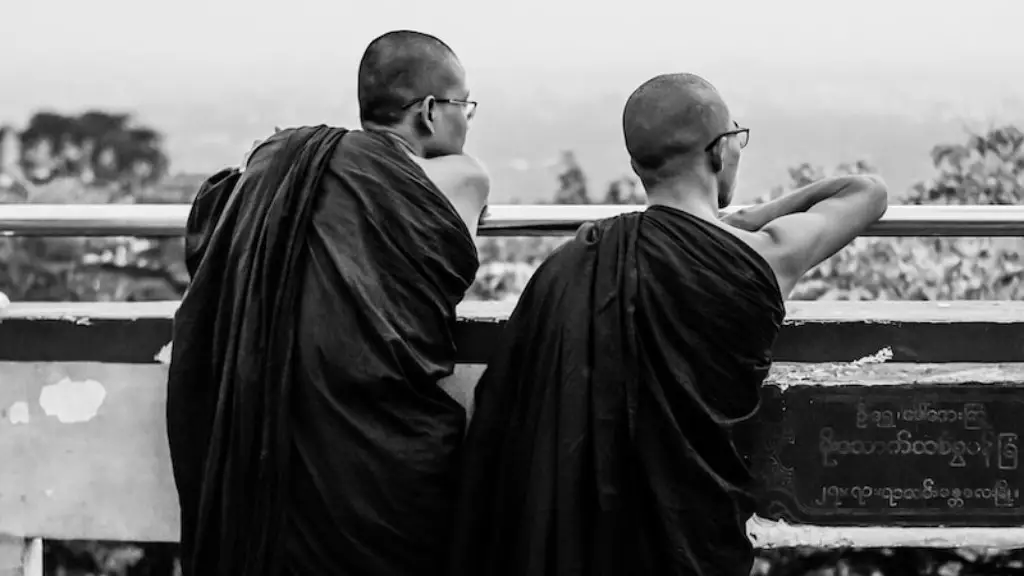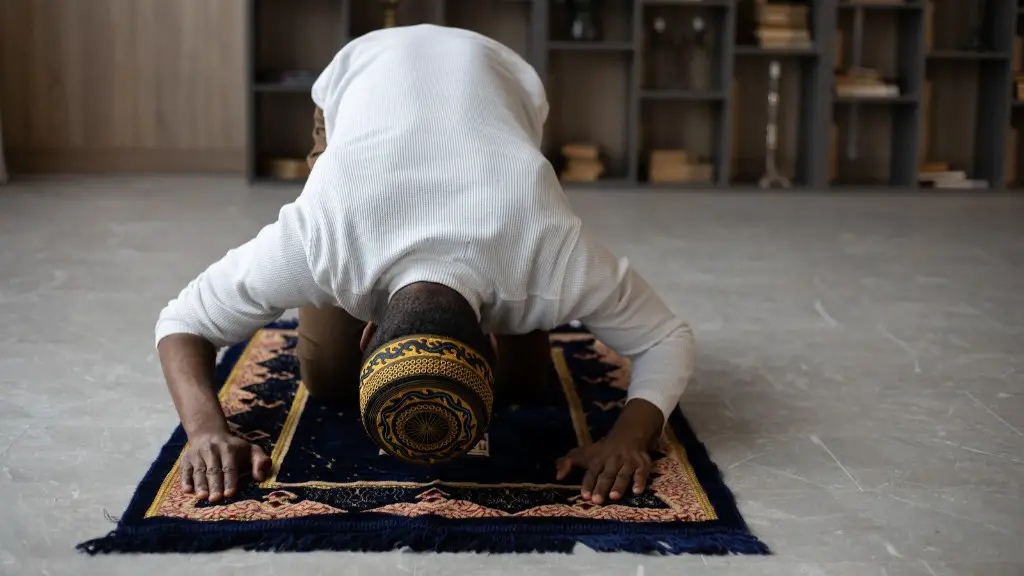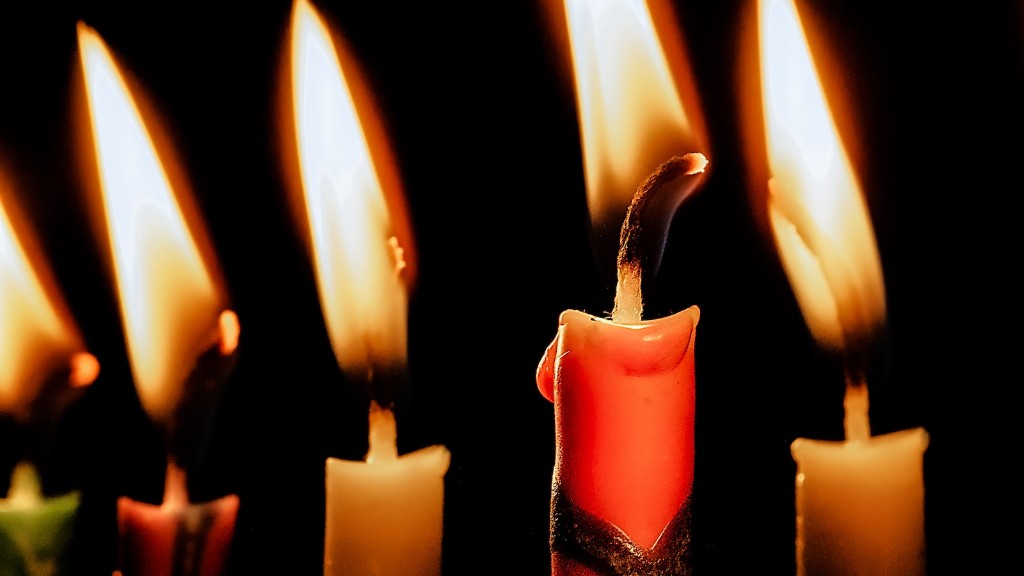Maimonides on Afterlife
The 12th century Jewish philosopher, Moses Maimonides, is famous for his work on the subject of afterlife. According to Maimonides, there is a fundamental belief in Judaism that the soul of a person continues to exist after death, that humans have an immortal soul, and that this soul departs from the body at death. Maimonides wrote that when a person dies and the body is buried, the soul gradually becomes disembodied, or freed from materialism, and begins to ascend through the realms of the afterlife to experience a higher level of existence.
The concept of reward and punishment is central to the belief in an afterlife for the Jews. Maimonides wrote that the ultimate reward for performing mitzvot (good deeds) is the presence of God and the ultimate punishment for rejecting mitzvot is exclusion from the spiritual reward of the afterlife. Maimonides also speaks of the Jewish beliefs in the resurrection of the dead and the world to come, in which the souls that have thus been elevated in the afterlife will be reunited with their bodies and will enjoy a life of eternal pleasure.
Another core idea within Maimonides’ thought on afterlife is the concept of Olam Ha-ba, the World to Come. According to Maimonides, Olam Ha-ba is the realm of the afterlife where all the good and righteous souls of the departed will go to experience eternal bliss. The righteous souls will be rewarded not only in the physical world after death, but also in the spiritual realm of the afterlife. As Maimonides wrote: “the reward to the righteous will be to be in the greatest eternal joy, to behold the countenance of the Shekhinah, and to take delight in the secrets of the Torah and its wisdom”.
Schechter on the Separation from the Living
The noted 19th century rabbi, Solomon Schechter, wrote extensively about the separation of the living from the deceased according to traditional Jewish belief. He noted that although the soul of the deceased can experience an after-life in the form of a higher spiritual life, it is severed from the physical world and the people they have left behind. During a funeral, it is not uncommon for traditional Jews to recite a special blessing to remember the dead and to thank God for the life they lived.
According to Schechter, the separation between the living and the departed is an absolute one and is considered a form of mourning. He believed that the souls of the departed have been released from their earthly bodies and have returned to their original source of life, but that the bereaved are left mourning their loss. In turn, the deceased are remembered not only with words of comfort and remembrance, but also through prayer, study of the Torah, and other forms of Jewish worship that acknowledge their presence in the afterlife.
The preservation of the memory of the deceased is an important part of the mourning process, but Schechter noted that there is also a sense of solace in the knowledge that the wisdom and love of the departed has now ascended to a realm beyond physical death. This is an important idea in Judaism, as it allows us to cherish the memory of the departed and to pay homage to the unique and beautiful life that they once lived.
Forces of Good and Evil
In Jewish afterlife belief, there is a constant struggle between good and evil. The righteous are believed to ascend to the highest world of Olam Ha-ba, while the wicked are plunged into the depths of Gehinnom, the realm of punishment. Both realms are located in the afterlife, and Maimonides wrote that the rewards and punishments endured in the afterlife are determined by the deeds of the individual person in life. He wrote that it is the fate of some to enter Gehinnom, while the chosen will ascend to the heights of life in Olam Ha-ba.
In addition to the idea of rewards and punishments, Maimonides also described a third realm of existence in the afterlife known as Sheol, where both the righteous and wicked can go as part of their personal spiritual journey. This is a place of spiritual rejuvenation and transformation where the soul is able to shed its earthly attachments and begin a new spiritual life. The idea of Sheol is integral to the Jewish belief in afterlife, as it allows for a place of spiritual redemption and growth even in the face of the looming presence of death.
Divine Intervention
In the world of Judaism, the afterlife is an ever-evolving entity that is subject to the divine intervention and grace of God. Many believe that the soul of the deceased can be influenced by the prayers and good deeds of the living, such as reciting kaddish and performing acts of kindness as a way of honoring the deceased.
The notion that the living can influence the afterlife of the departed is an important concept in Judaism, as it gives the bereaved a sense of comfort and hope. This is especially true in times of great sorrow and grief, when faced with the death of a loved one. By trusting in the power of divine intervention and grace, the bereaved can draw strength and peace from their faith in the promise of an eternal afterlife.
The Concept of Reincarnation
The concept of reincarnation is an intriguing and complicated one in the Jewish faith, as some believe that deceased souls can be reincarnated and reborn in this world. This idea is based on the belief that the soul can become detached from its physical form and continue to live in different forms throughout the ages. In traditional Judaism, this process is believed to be only voluntary, and not forced upon the deceased.
This concept of reincarnation has long been a source of debate and scandal within the Jewish faith, but it is an essential part of Jewish afterlife belief. Although the idea of reincarnation is not central to Jewish faith, it is still an important part of the belief in afterlife and how the fate of the soul is determined.
The Significance of Afterlife
For Jews, the concept of afterlife is deeply meaningful and important. From Maimonides to Schechter, many have sought to explain and understand what happens to the soul after death. They have sought to reaffirm the belief that the souls of the departed can ascend to a higher level of existence, and that even through our sorrow, it is possible to find peace and comfort in the promise of the afterlife.
The belief in afterlife is a core part of Jewish belief and identity. It is a reminder that life is eternal and that death is just a part of the cycle of life. As we remember our loved ones and pay homage to their legacy, it is important to also remember to trust in the power of the afterlife and in the hope that our loved ones are now in a better place.
The Process of Transition
The process of transitioning from life to death is an incredibly complex and personal experience for each and every person. In Judaism, it is believed that the soul of the departed undergoes a profound spiritual transformation during transition, and that the soul is alive and undergoes a purification process during this time. This process can be a difficult and painful one, but it is also a necessary step in order for the soul to be released from its earthly bonds and begin to ascend to the heights of the afterlife.
Ultimately, the process of transition is a deeply personal one that is different for every individual. This process is not merely physical, but also spiritual, and it is important to remember that the soul of the departed is still with us and can still be connected to us through prayer and remembrance. As we remember our departed loved ones and bid them farewell, it is important to also remember to trust in the promise of the afterlife and in the power of God’s grace.
Connection with the Living
Although the Jewish faith is steeped in the belief of the afterlife, it is important to remember that the departed still remain connected to the living in the present. Traditional Jews believe that through prayer, study, and other forms of worship, it is possible to still be connected to the departed and to honor their memory and legacy.
The combination of respect and reverence for the departed and belief in the afterlife is a powerful combination that is central to Jewish faith and identity. By keeping our loved ones in our memories, thoughts, and prayers, we can still honor them and keep them close in our hearts. This is the essence of the idea of afterlife in the Jewish faith: to remember the departed and to trust in the power of God’s grace.
The Quest for Meaning
The concept of afterlife has long been a source of comfort and reassurance to Jews. It provides us with a sense of comfort and hope in the face of death, and allows us to believe in the eternal life of our souls. By understanding the deep spiritual significance of afterlife in the Jewish faith, we can seek to make meaning out of our lives, even in the face of death and mourning.
The quest for meaning in the face of death is an essential part of Jewish faith, as it allows us to make sense out of tragedy and to find peace and solace in the promise of the afterlife. It is a reminder that our lives are interconnected, that our actions and deeds can transcend death and time, and that our souls can endure forever.
A Final Farewell
As Jews, our faith teaches us to remember the departed and to leave them with a final farewell. This is a way for us to show respect for the finality of death and to honor the deceased in our hearts and in our spiritual practices. By leaving our departed loved ones with words of comfort and hope, we can find peace and solace in the knowledge that their spirit lives on in the afterlife.
As Jews, our faith tells us to accept God’s will with humility and grace and to remember our departed loved ones in our hearts and memories. It is a reminder that our lives are interconnected and that our memories, thoughts, and prayers can reach beyond our earthly bonds and touch the souls of the departed.



